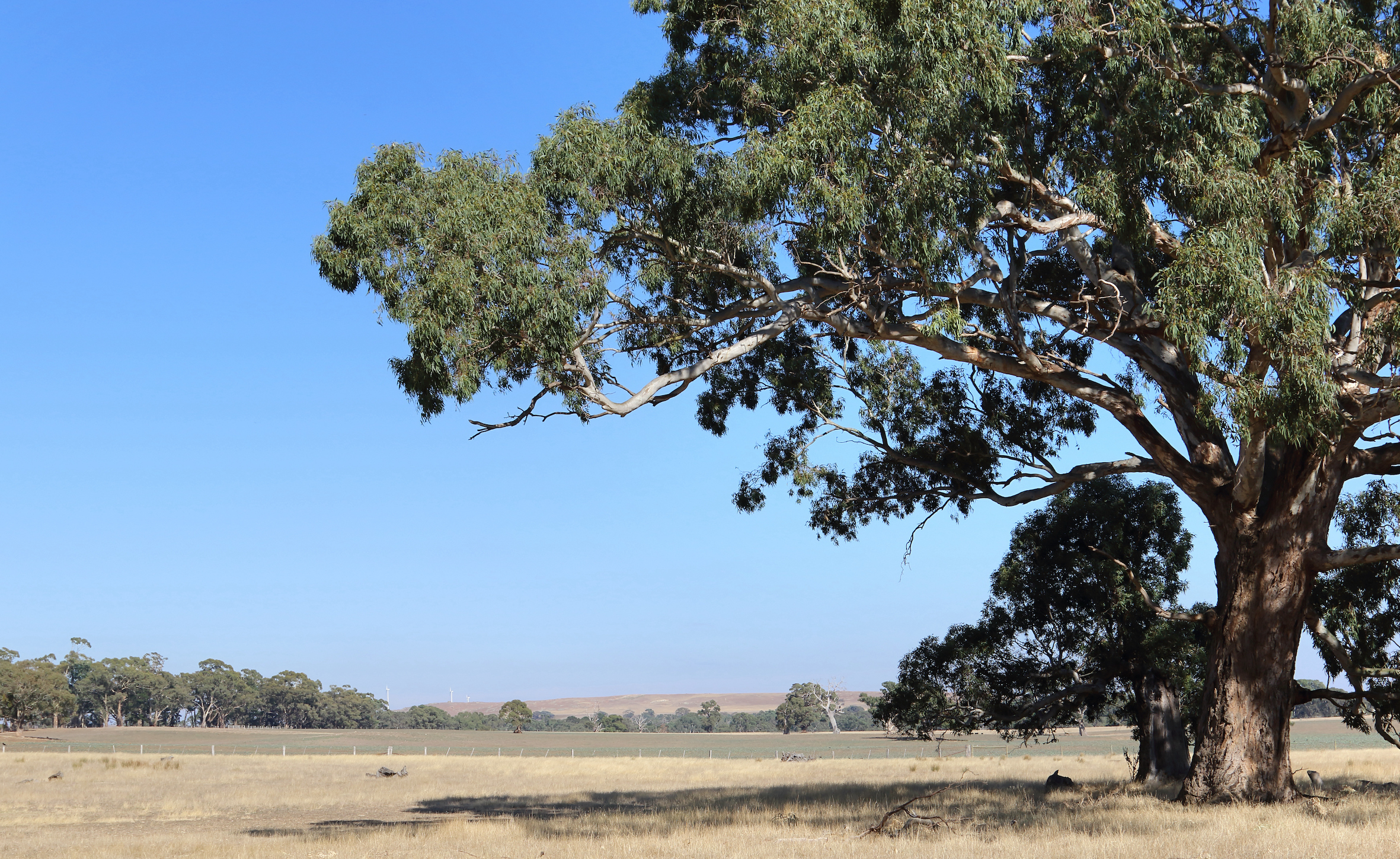The term 'paddock trees' brings to mind old native trees with large canopies standing alone in a field.
Paddock trees are generally isolated, small patches of trees. They're a prominent feature of agricultural landscapes in Victoria. Some may even say paddock trees are an icon of rural Australia.
However, paddock trees are also vital to environmental health.
Paddock trees play a unique role in biodiversity conservation. They provide habitats for a wide range of species, particularly those that need hollows and the abundant food resources provided by large trees.
In fact, research has found that large old paddock trees support more native birds and bats than individual trees within a woodland setting. Even dead paddock trees can provide a home for animals, offering essential steppingstones for the movement and protection of species between bushland patches.

Farm stock camping under paddock trees can also physically damage the root zone and tree trunk as well as increase nutrient loads in the surrounding soil.
A permit is required in Victoria to remove, destroy, or lop any native vegetation, including paddock trees.
Despite this, paddock trees are declining at a rapid rate due to natural ageing and ‘dieback’ – a sickness in trees which progresses from the tips of the shoots, along the branches and eventually reaching the trunk. Trees with dieback also have low rates of recruitment, also known as regeneration.
Paddock trees are also seen as an obstacle to cropping and a safety concern amongst communities. As a result, they’re often removed to extend grazing areas and improve irrigation. The result? Research has concluded that paddock trees could be lost from southeast Australia within the next century.
Horsham Rural City Council’s [Former] Planning and Economic Director, Angela Murphy said that every effort should be made to protect paddock trees from damage.
“Birds, bats and other animals use paddock trees for resting, feeding, protection from predators and as a steppingstone to larger stands of vegetation. Even in dead trees, the hollows are used for nesting, whilst fallen timber provides habitat for small ground-dwelling animals such as reptiles,” she said. “It will take 150 years or more to replace them and the essential habitat they provide for many species.”
Many Victorian landholders and Landcare groups recognise the importance of paddock trees and have programs to protect them. These programs involve fencing the paddock trees from the impacts of stock and plantings. This provides a wider ecological balance and wind protection measures. In turn, this will ensure paddock trees survive until a new generation of trees grows to replace them.


